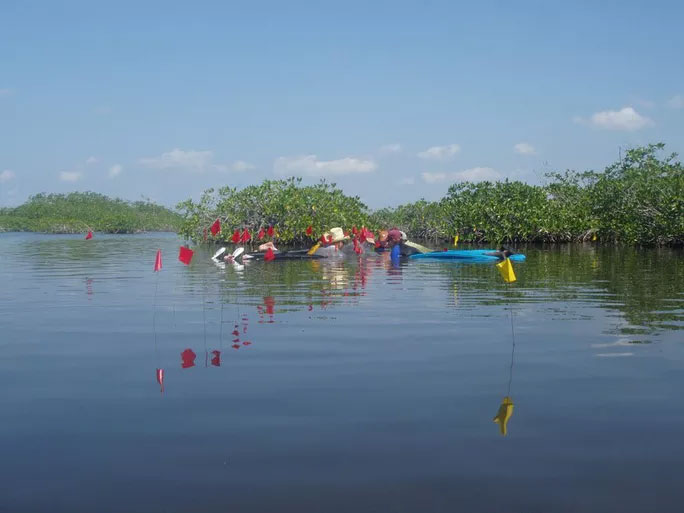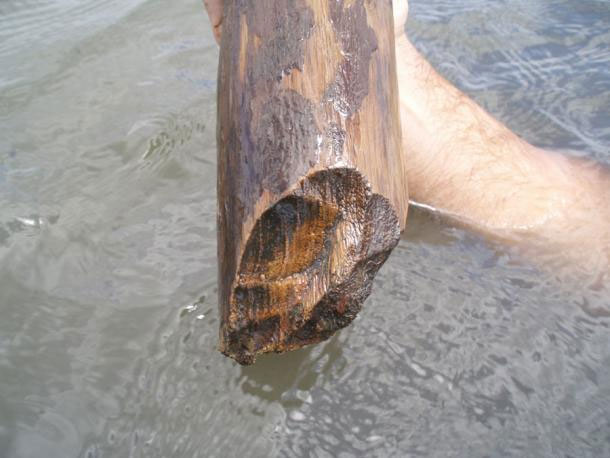New evidence of the timeless development of the Maya civilization has been unearthed in the Belize lagoon along the Caribbean coast, revealing that this empire possessed an impressive industry.
According to Ancient Mesoamerica, although the Classic Period of the Maya lasted from 250 to 900 AD, their civilization was not inferior to other civilizations that emerged centuries later, particularly in terms of production and trade.

Archaeologists working at the site of an ancient Maya salt-making village – (Photo: Louisiana State University).
The recently discovered ruins beneath the Belize lagoon are from a large salt-making village, which, unlike other contemporary primitive civilizations, operated in an industrial manner and traded their products widely.
During that time, salt was an extremely valuable commodity worldwide, making this village a prosperous hub. Combined with numerous salt-making villages throughout the empire, the Maya developed a comprehensive salt industry, significantly contributing to their wealth. Salt also served as a tool for preserving meat, ensuring that the Maya’s meals were always diverse and convenient.

A wooden post from a stilt house preserved intact by saltwater – (Photo: Louisiana State University).
According to Ancient Origins, this research, led by archaeologist Heather McKilop from Louisiana State University (USA), has collected the first artifacts from this salt-making village – known as the Paynes Creek Salt Works – since 2004. Excavations are still ongoing today, yielding numerous truckloads of artifacts including tools, fragments of ceramic jars used for boiling brine, cooking stoves, wooden posts, and thatch used for constructing stilt houses along the lagoon.
This area is a mangrove forest with a high concentration of saltwater, making it an ideal choice for the Maya.

















































